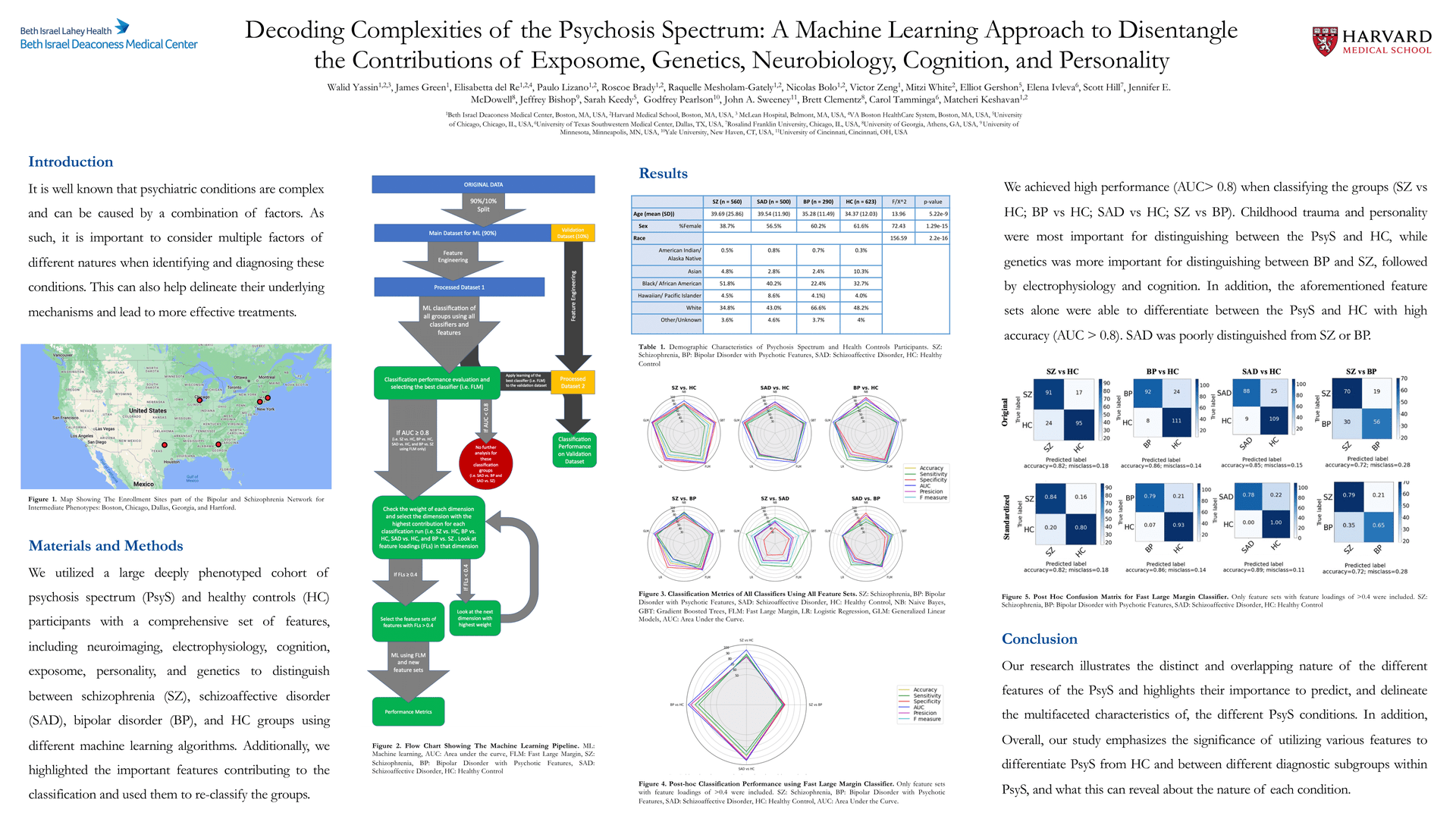Scientific Abstract
Background: It is well known that psychiatric conditions are complex and can be caused by a combination of factors. As such, it is important to consider multiple factors of different natures when identifying and diagnosing these conditions. This can also help delineate their underlying mechanisms and lead to more effective treatments.
Methods: We utilized a large deeply phenotyped cohort of psychosis spectrum (PsyS) and healthy controls (HC) participants with a comprehensive set of features, including neuroimaging, electrophysiology, cognition, exposome, personality, and genetics to distinguish between schizophrenia (SZ), schizoaffective disorder (SAD), bipolar disorder (BP), and HC groups using different machine learning algorithms. Additionally, we highlighted the important features contributing to the classification and used them to re-classify the groups.
Results: We achieved high performance (AUC> 0.8) when classifying the groups (SZ vs HC; BP vs HC; SAD vs HC; SZ vs BP). Childhood trauma and personality were most important for distinguishing between the PsyS and HC, while genetics was more important for distinguishing between BP and SZ, followed by electrophysiology and cognition. In addition, the aforementioned feature sets alone were able to differentiate between the PsyS and HC with high accuracy (AUC > 0.8). SAD was poorly distinguished from SZ or BP.
Conclusions: Our research illustrates the distinct and overlapping nature of the different features of the PsyS and highlights their importance to predict, and delineate the multifaceted characteristics of, the different PsyS conditions. In addition, Overall, our study emphasizes the significance of utilizing various features to differentiate PsyS from HC and between different diagnostic subgroups within PsyS, and what this can reveal about the nature of each condition.
Search posters

